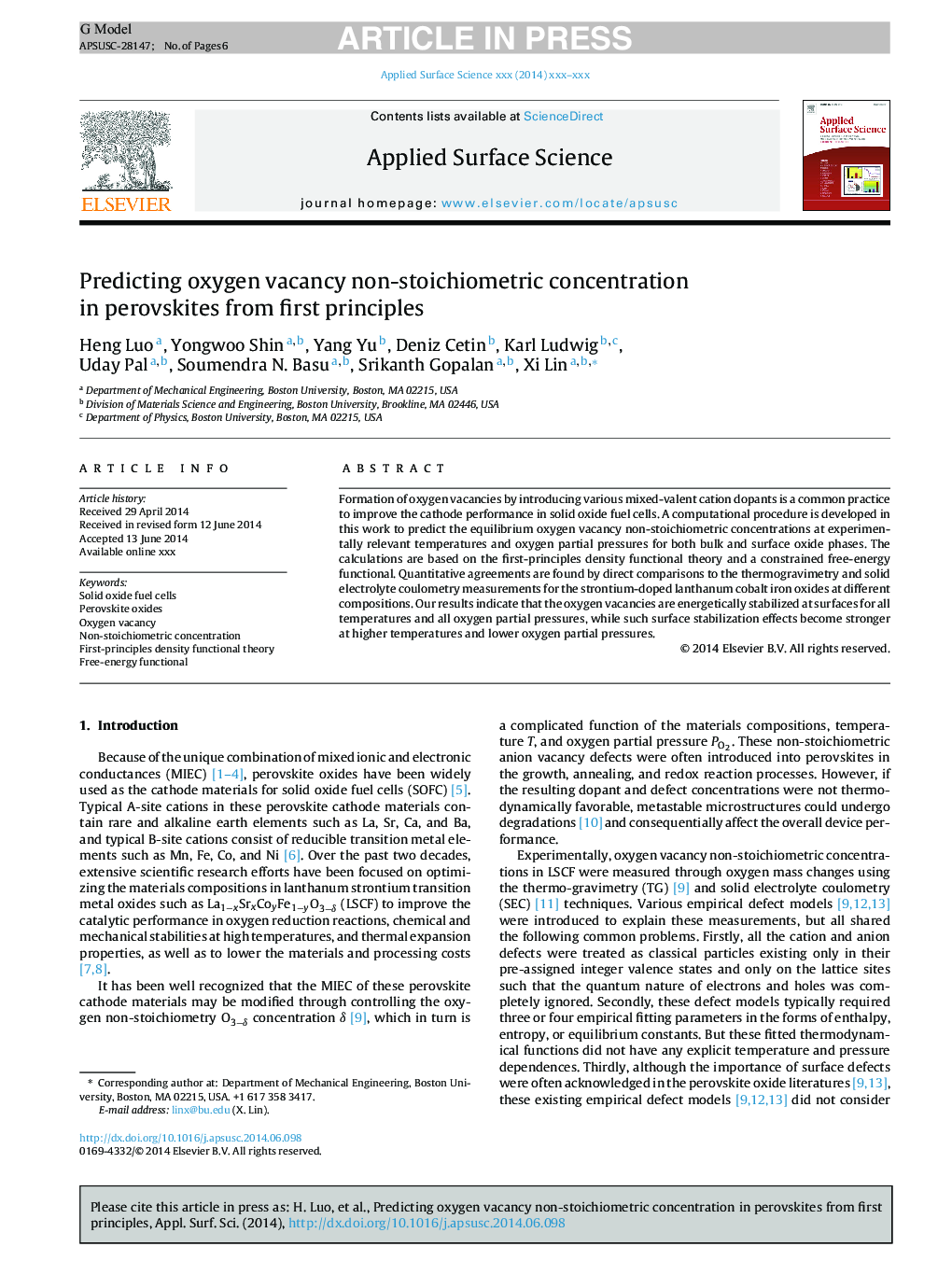| Article ID | Journal | Published Year | Pages | File Type |
|---|---|---|---|---|
| 5349147 | Applied Surface Science | 2014 | 6 Pages |
Abstract
Formation of oxygen vacancies by introducing various mixed-valent cation dopants is a common practice to improve the cathode performance in solid oxide fuel cells. A computational procedure is developed in this work to predict the equilibrium oxygen vacancy non-stoichiometric concentrations at experimentally relevant temperatures and oxygen partial pressures for both bulk and surface oxide phases. The calculations are based on the first-principles density functional theory and a constrained free-energy functional. Quantitative agreements are found by direct comparisons to the thermogravimetry and solid electrolyte coulometry measurements for the strontium-doped lanthanum cobalt iron oxides at different compositions. Our results indicate that the oxygen vacancies are energetically stabilized at surfaces for all temperatures and all oxygen partial pressures, while such surface stabilization effects become stronger at higher temperatures and lower oxygen partial pressures.
Related Topics
Physical Sciences and Engineering
Chemistry
Physical and Theoretical Chemistry
Authors
Heng Luo, Yongwoo Shin, Yang Yu, Deniz Cetin, Karl Ludwig, Uday Pal, Soumendra N. Basu, Srikanth Gopalan, Xi Lin,
